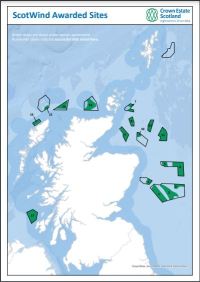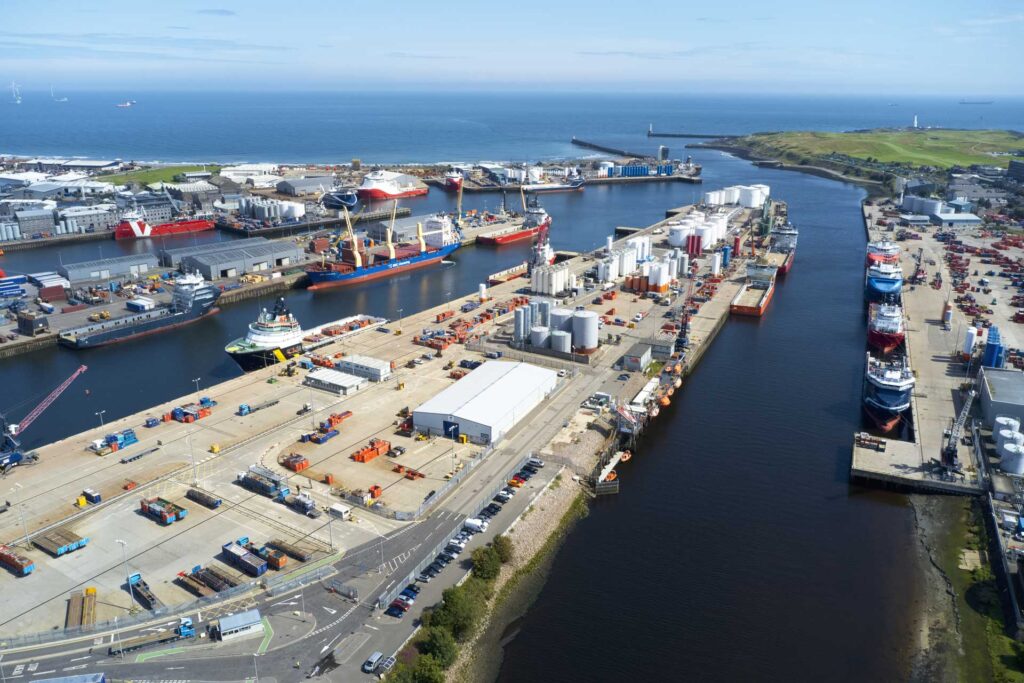ScotWind: A 15GW Floating Wind Booster Shot
After what has seemed like an age, yesterday we saw announced the long-awaited results of the ScotWind leasing round. This auction saw 25 GW awarded across 17 projects which brings a huge increase in floating wind development to the UK, complementing what is happening in the Celtic Sea. Scotwind will raise £700m in option fees and possibly unlock a £25bn supply chain booster shot. A surprise was that the 25GW total itself far exceeds the expected 10GW which was the previous planning assumption.
The 15 ScotWind zones offered in this leasing round attracted 74 bids from a range of utilities, IPPs, and oil and gas companies. The leasing process is managed by Crown Estate Scotland (CES), which takes its lead from the Scottish government.
We see an interesting diversity of developers, and with 60% of the leases going to floating projects, there will be both the opportunity to create a floating supply chain, but also the challenge that will come from realising multi-GW floating projects.
The successful developer consortia will be celebrating, those who have lost out looking at their bids, learning lessons and moving on to other markets, or preparing to call those awarded with leases looking for a way back in.
Table 1 ScotWind Lease Results
| No | Developer | Capacity (GW) | Floating |
| 1 | BP Alternative Energy Investments | 3.0 | |
| 2 | SSE Renewables | 2.6 | Y |
| 3 | Falck Renewables | 1.2 | Y |
| 4 | Shell New Energies | 2.0 | Y |
| 5 | Vattenfall | 0.8 | Y |
| 6 | Deme | 1.0 | |
| 7 | Deme | 1.0 | Y |
| 8 | Falck Renewables | 1.0 | Y |
| 9 | Ocean Winds | 1.0 | |
| 10 | Falck Renewables | 0.5 | Y |
| 11 | Scottish Power Renewables | 3.0 | Y |
| 12 | BayWa | 1.0 | Y |
| 13 | Offshore Wind Power | 2.0 | |
| 14 | Northland Power | 1.5 | Y |
| 15 | Magnora | 0.5 | Mixed |
| 16 | Northland Power | 0.8 | |
| 17 | Scottish Power Renewables | 2.0 |
It’s hard to believe that less than 5 years from the commissioning of Equinor’s 30 MW HyWind Scotland demonstration project, we have just leased 15GW of floating wind around Scottish shores. The distance travelled in floating wind, bringing this technology to the point where we have the confidence to be able to commit to the development of these projects is staggering but the road ahead to realise them is another challenge entirely. What is a certainty is that this kind of ambition is what we need to be able to solve the technical challenges which will allow us to deliver bankable, commercial scale, floating offshore wind.

We look forward to seeing floating technology develop at a pace that sees safe and technically refined designs meeting the demands of the financing and insurance communities.
The delay in ScotWind has worked in Scotland, and the nascent supply chain’s, favour. It has forced the bidders to realise how competitive this process is as it was eventually launched in the shadow of England and Wales’ Round 4. With the cap on valuation fee, the consortia factored in early supply chain development as one way to differentiate and look for competitive advantage. This resulted in some large, early supply chain development commitments. It is estimated that this early investment, without matching investment, could exceed £500m. The SCDS process brought a measurable structure to this leasing process.
But fundamentally, is it possible to create a domestic supply chain with the capability to hit all the project’s local content commitments, let alone ambition numbers? If the first project comes online in 2029 with the peak in the years after, putting aside competitiveness, will there be enough local supply chain to deliver? It is likely that the projects with the early development flexibility (including budgets!) and a real appetitive to work early and collaboratively with stakeholders including other projects, will be the ones who will be more likely to develop and sign up that capability and capacity.

One area that needs addressing immediately is the port and harbour infrastructure. There is not currently enough capacity to build out these projects and there is only a short window to develop the assets required. We do not have mega-ports – clusters and early supporting investment is needed to determine what we need and where in order to get it built in advance of the construction phases. A delay will see port decisions going to England or further afield.
In this excitement, it is also worth remembering that the awards are the start of a long journey, the developers have to now finalise the agreement with CES, start the consenting process, win consent, and develop a project that can bid and be awarded a CfD, or obtain other routes to market.
Our experience of evaluating site conditions in some of the most technically challenging markets including previous Scottish projects, tell us that some of the projects will feature significant technical challenges; from deep water, difficult ground conditions, very long transmission links, limited weather windows for installation and O&M activities.
BEIS’ Offshore Transmission Network Review has local implications on the Connection and Infrastructure process for ScotWind projects. This is an exciting challenge that needs to be tackled to enable the realisation of ScotWind Project Delivery Plans. Some projects will also be considering alternative routes to market to limit their reliance on this process.
The competition for a CfD award will be an interesting space to watch over the coming years. A recent SOWEC report highlighted the pricing difference that transmission charges could make between a ScotWind project and projects in the South. Closing that gap will need some innovative approaches on top of general competitiveness in a CfD bid with its current focus on price only. With corporate PPAs appearing more strongly in global offshore wind projects, and Scottish projects already using this route to market, is the role of the market support mechanism likely to move again?
Consenting will also be a challenge from a planning point of view as the evaluation of the few projects consented so far has usually taken between one to two years. While the planning, licensing and evaluation teams of CES and Marine Scotland will face a major wave of projects with similar intended development programmes. Many sites are also in highly sensitive ornithological areas adding more strain to the limited resources of these planning bodies.
What we see fundamentally is a hugely exciting breakthrough for floating wind and the opportunity for this process to spur Scotland and the UK into developing a leading floating wind supply chain.
Finally, we were delighted to see so many of our clients and the bids we supported, come through and be awarded lease options. Our approach to leasing is one tailored to the developer’s strengths, weaknesses and strategy, the demands and needs of the market and leasing process and then the sites themselves. Gone are the days you just focus on the LCOE of a site – in 2021 the competitive nature of obtaining leases demands a more nuanced approach, our success in supporting 20% of the capacity awarded in ScotWind, I think, demonstrates this.

Katherine Phillips | Managing Director
